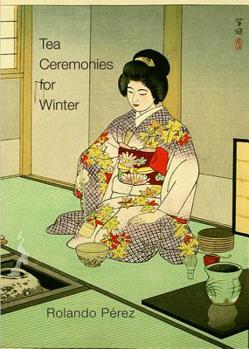Tea Ceremonies for Winter
The Japanese tea ceremony is an attempt to impart meaning to that which would oth- erwise go unnoticed. After all, what is so different about serving, pouring, drinking tea, than the brushing of one's teeth? No-thing. What gives significance to the serving of the tea is the "ceremony" itself--that is, the form. For in the tea ceremony, the form is the content. Now, in comparison to the Western poem, "full of" meaning, allusions, mythologies, history, etc. a haiku may "just" describe a scene in nature: the landscape: a river, a tree, a bird, and not much else. But that is so very much already, Rolando P?rez seems to suggest in Tea Ceremonies for Winter. So very much. "The objects of nature pre- sented in a Basho haiku, for instance, simply are--they exist for themselves," says P?rez. "If they are 'sublime, ' they are not so for us," and this is what we must all learn, if we are to save the Earth from complete destruction--the result of our Western greed and rampant narcissism. In this light, Tea Ceremonies for Winter is an invitation--through lan- guage--to let non-human objects be without submitting them to the control, manipu- lation, and exploitation of our Imperial I. P?rez's Tea Ceremonies for Winter is a book that says: "we are all in this together"--but that "we" also includes mountains, rivers, plastic bags, plants, rocks, tea leaves, light bulbs valves, hammers, mice, etc.. P?rez accomplishes this with simplicity and elegance of style





